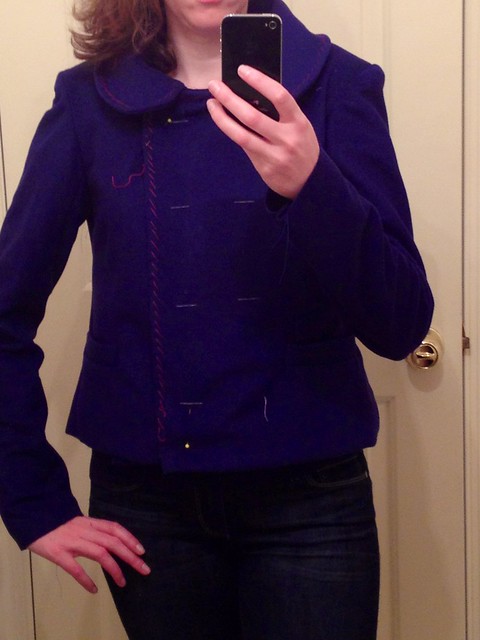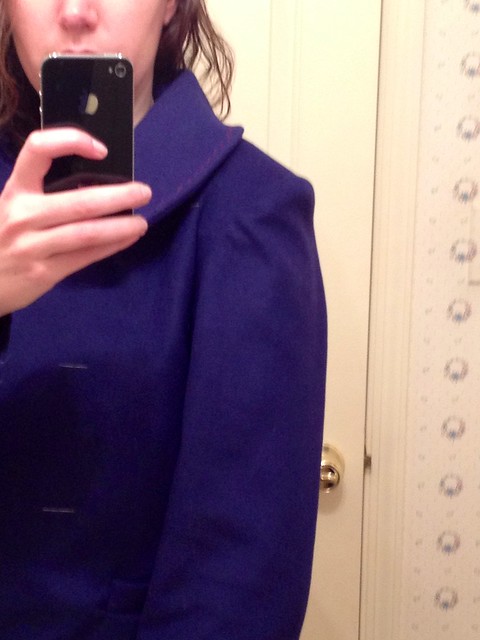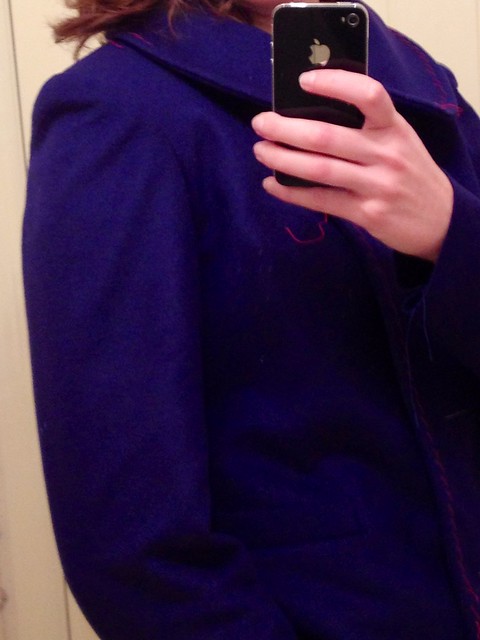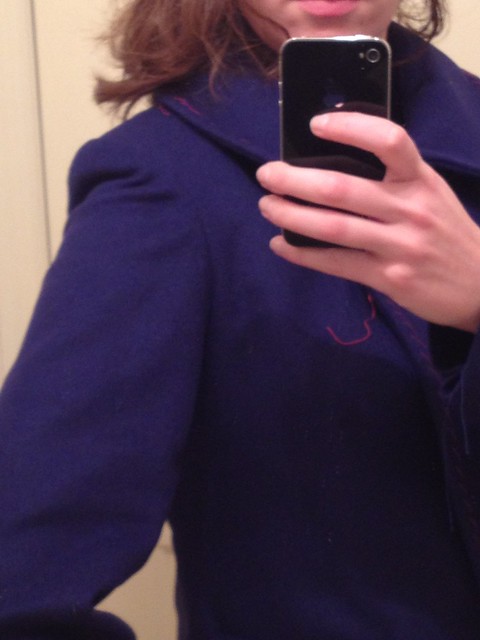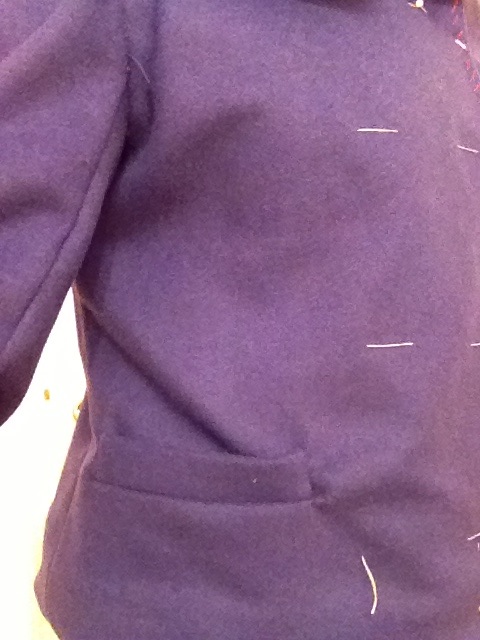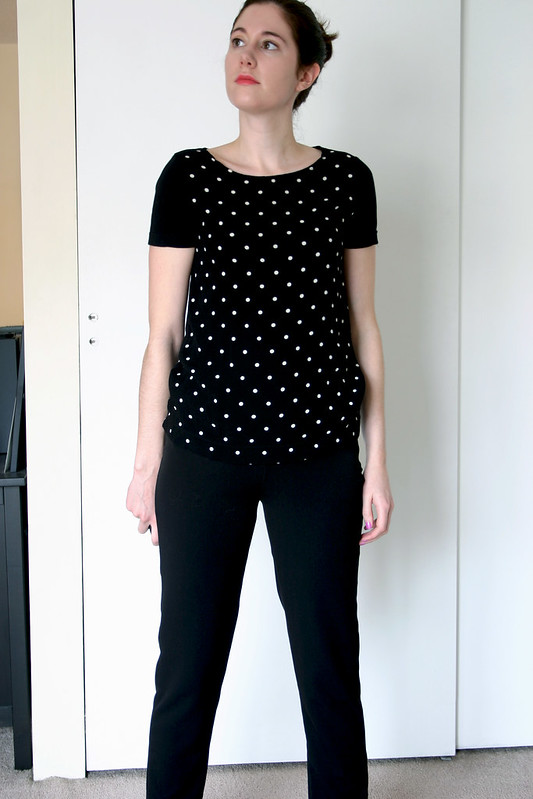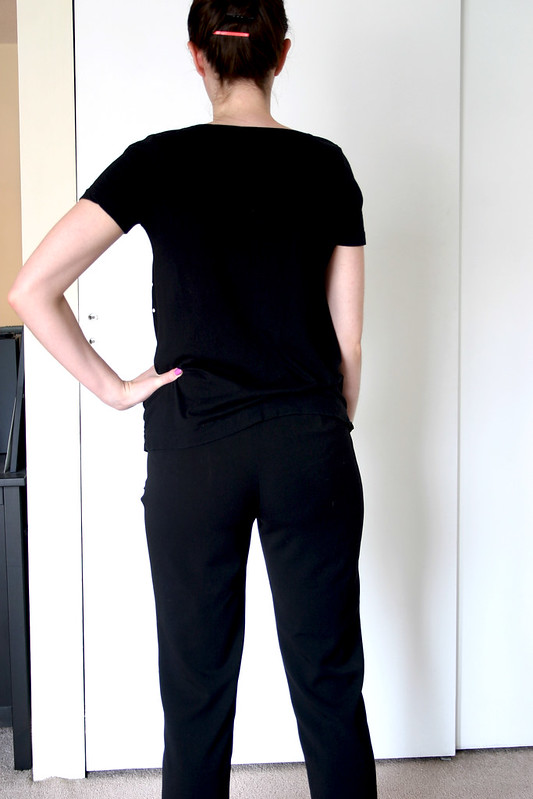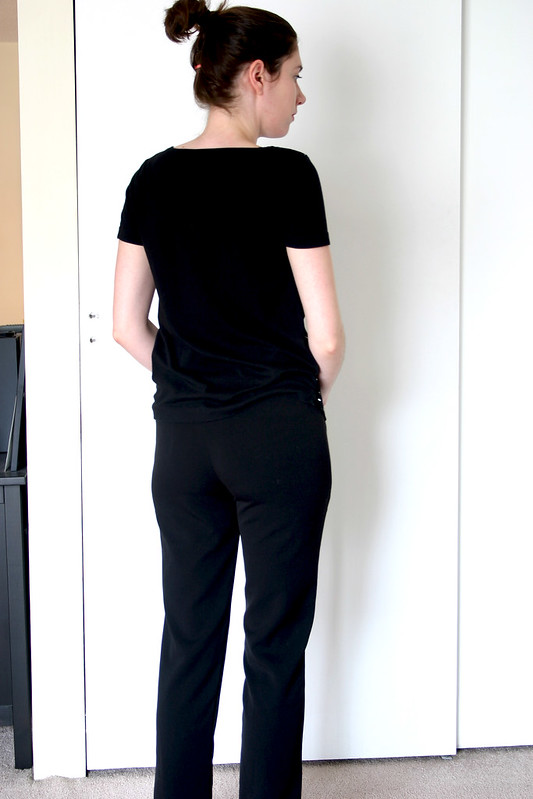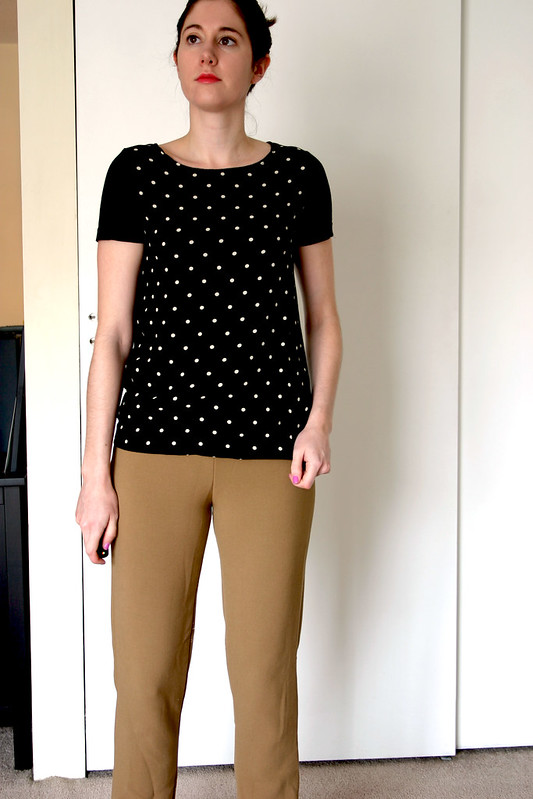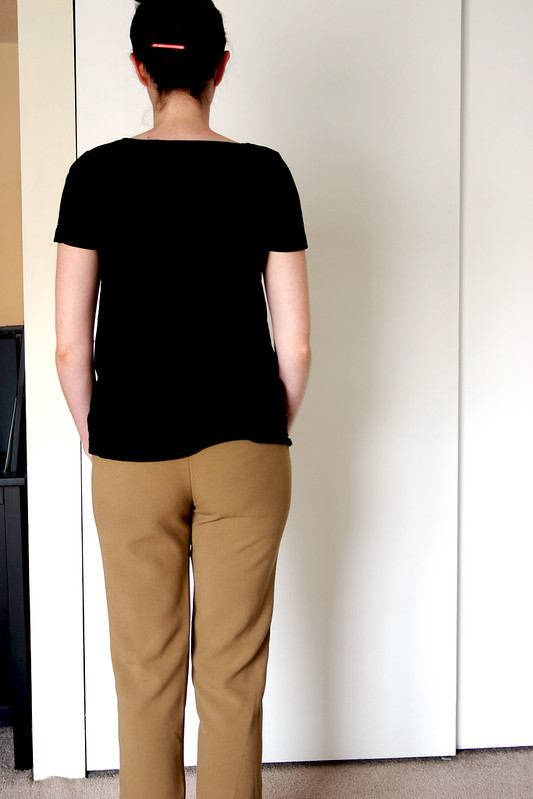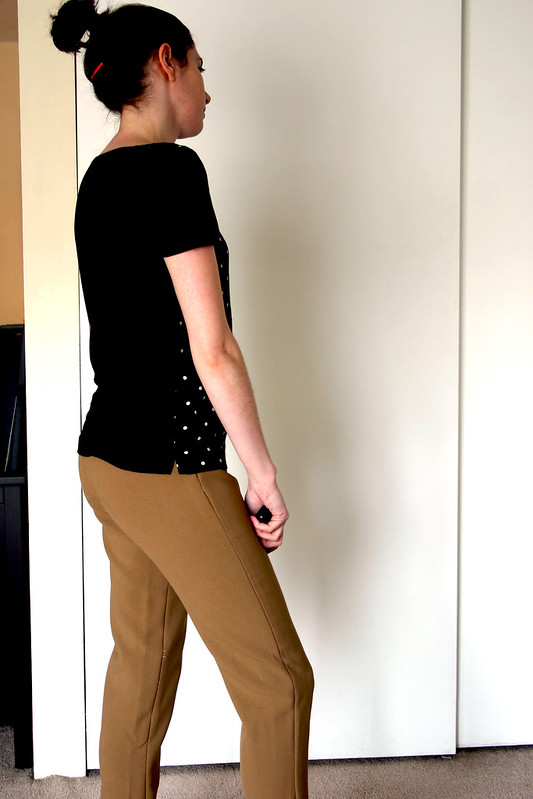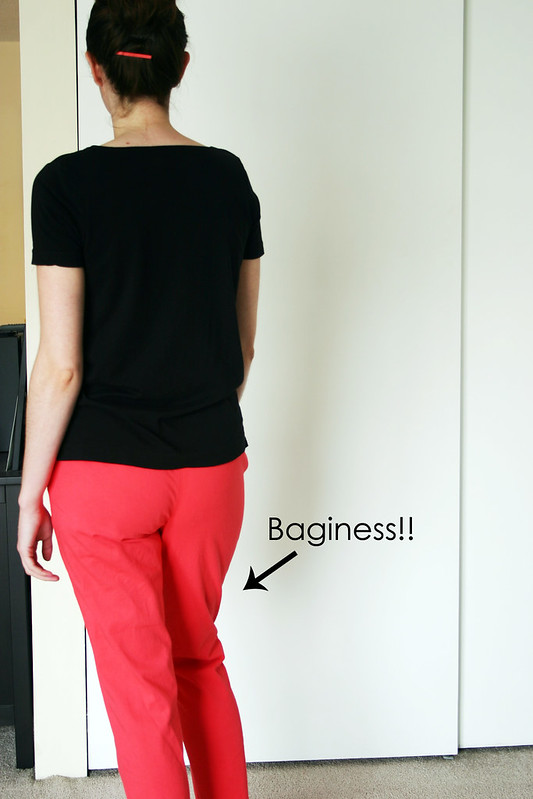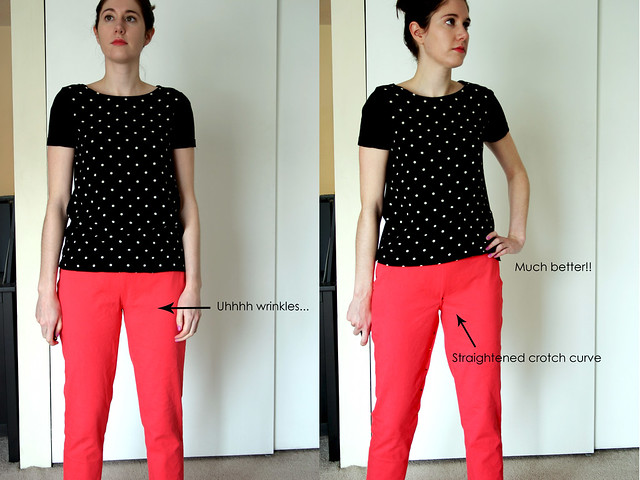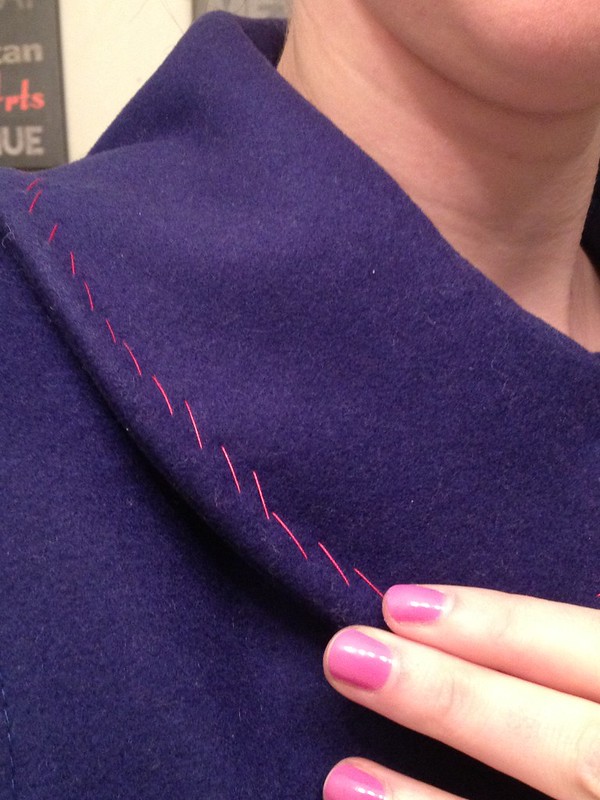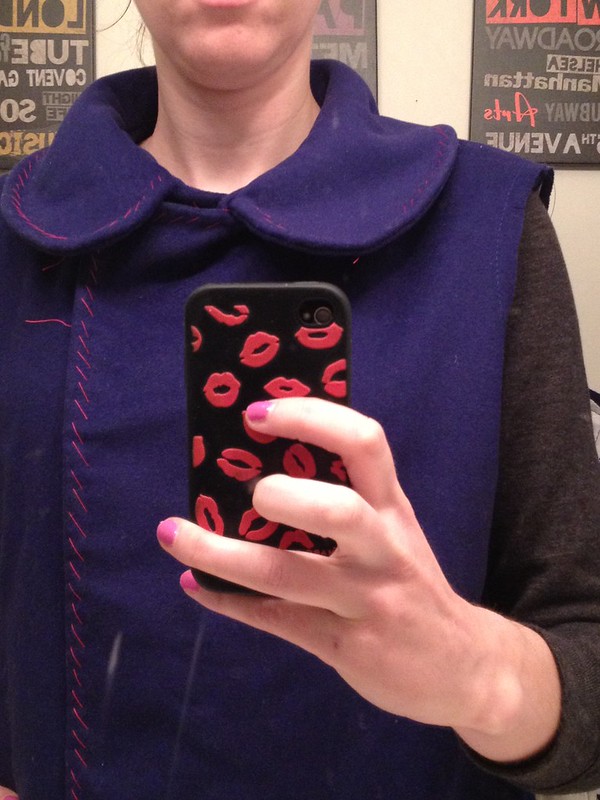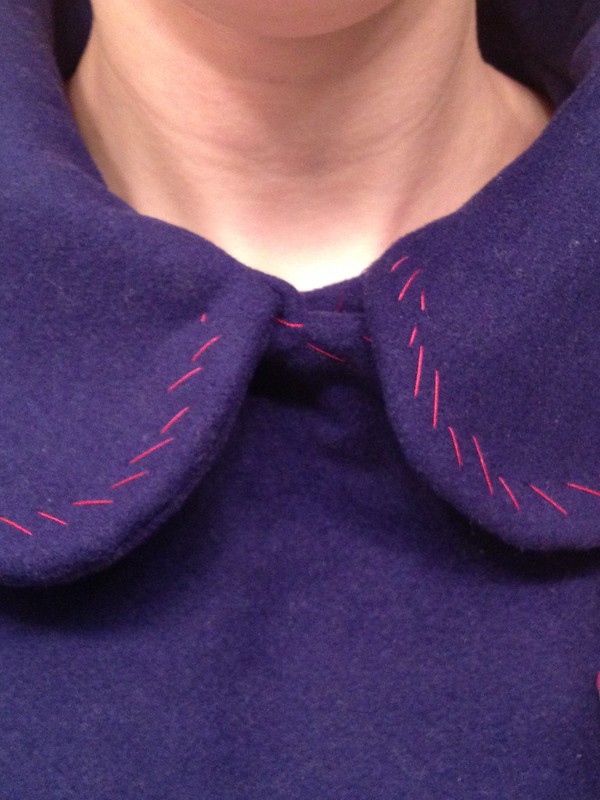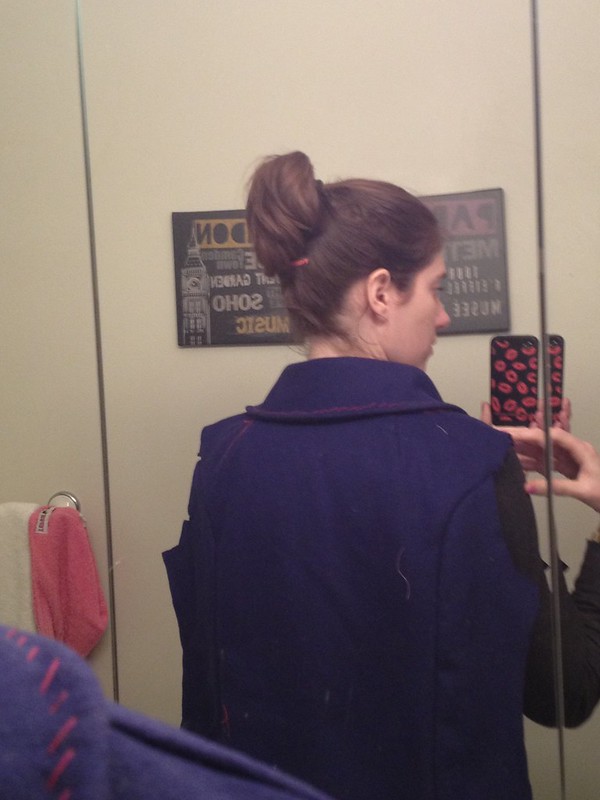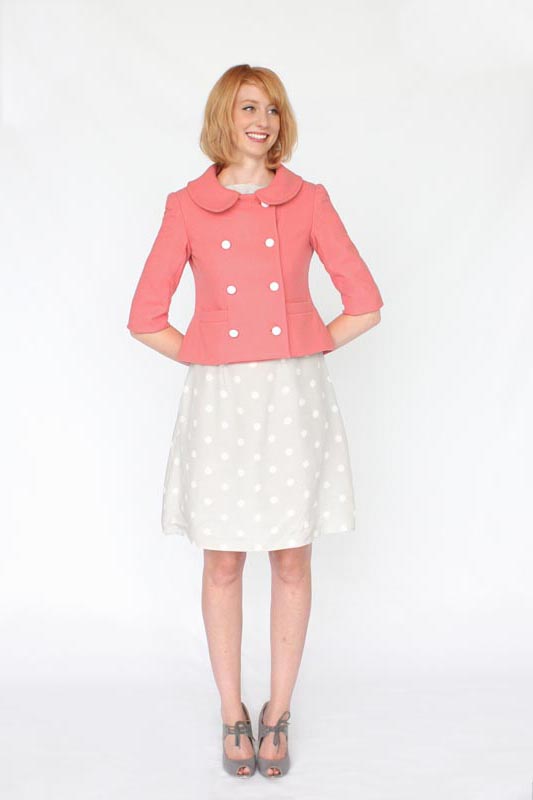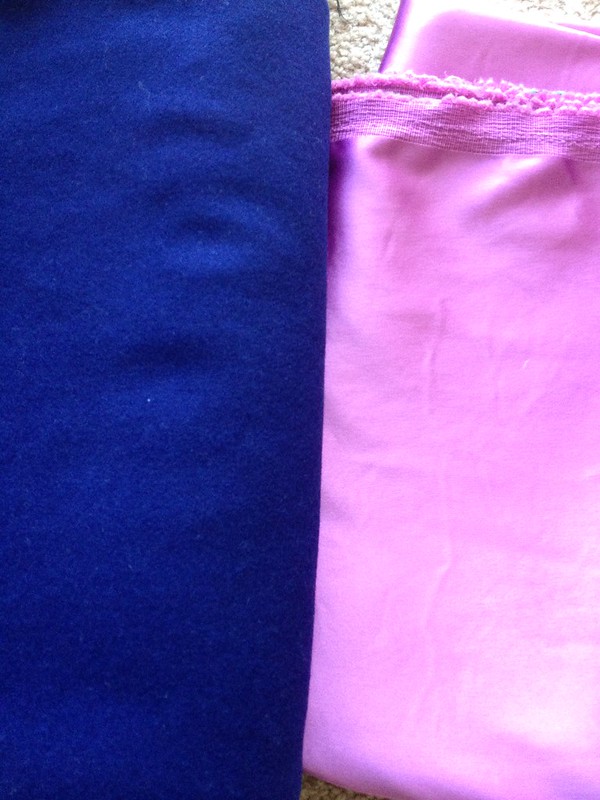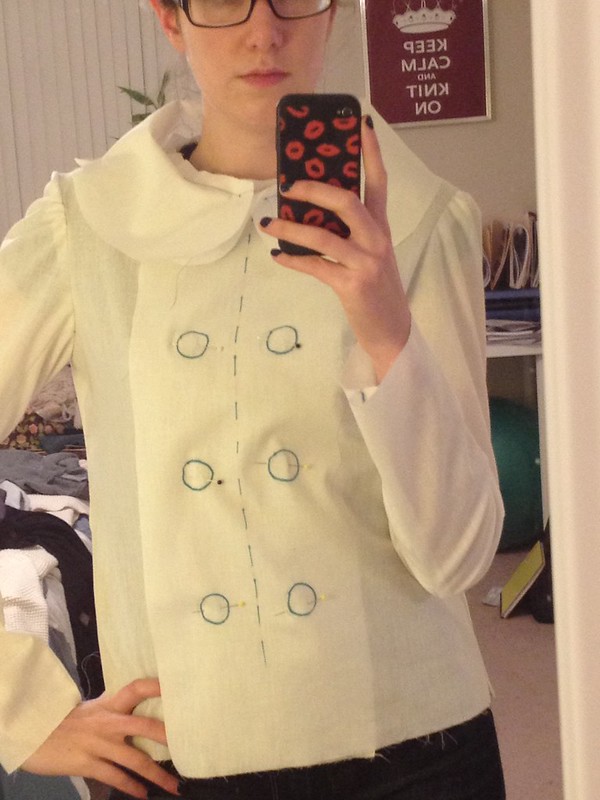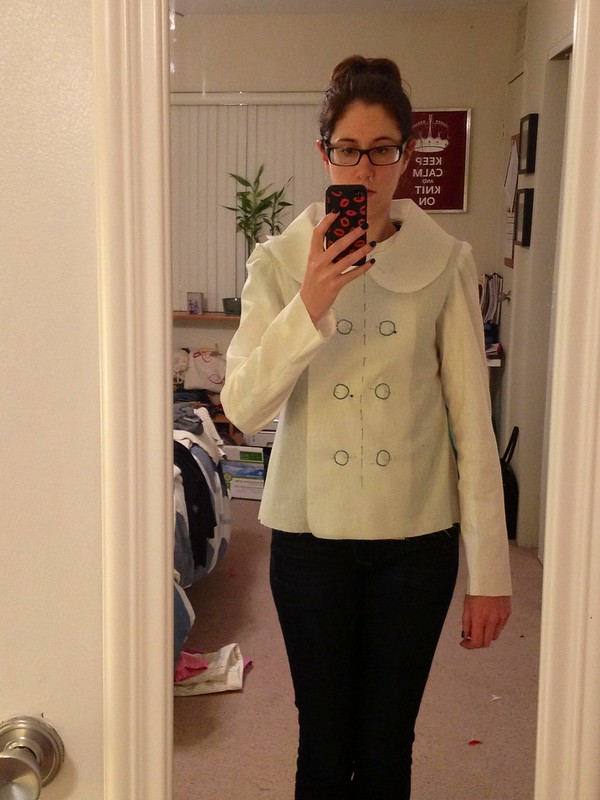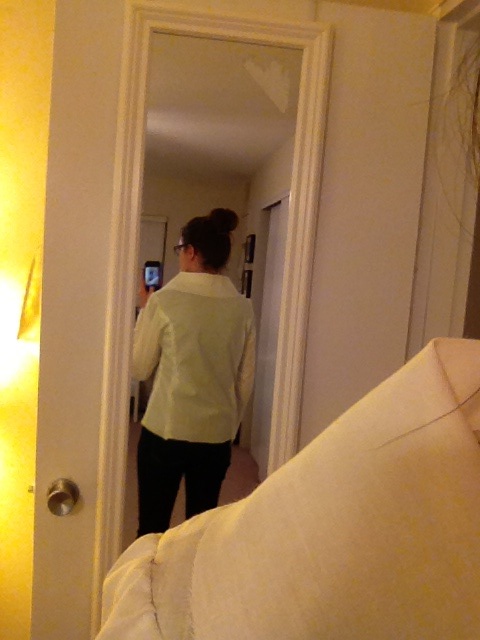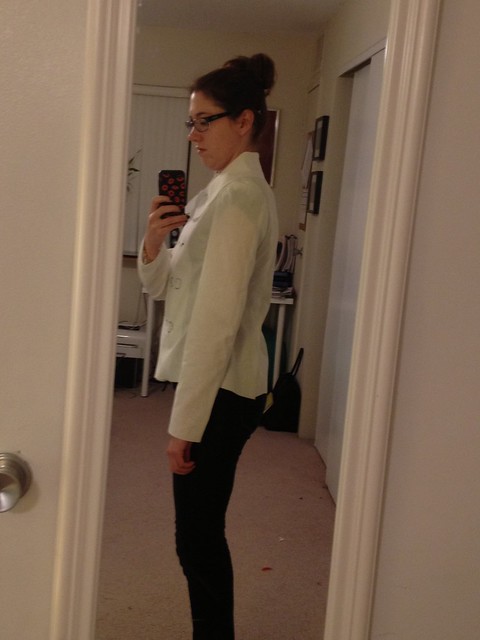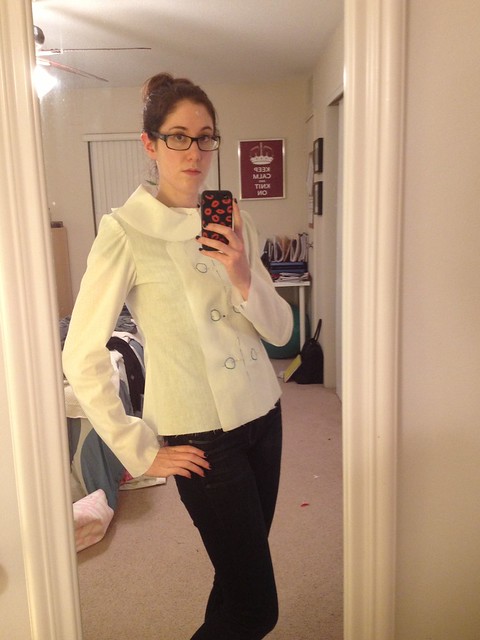
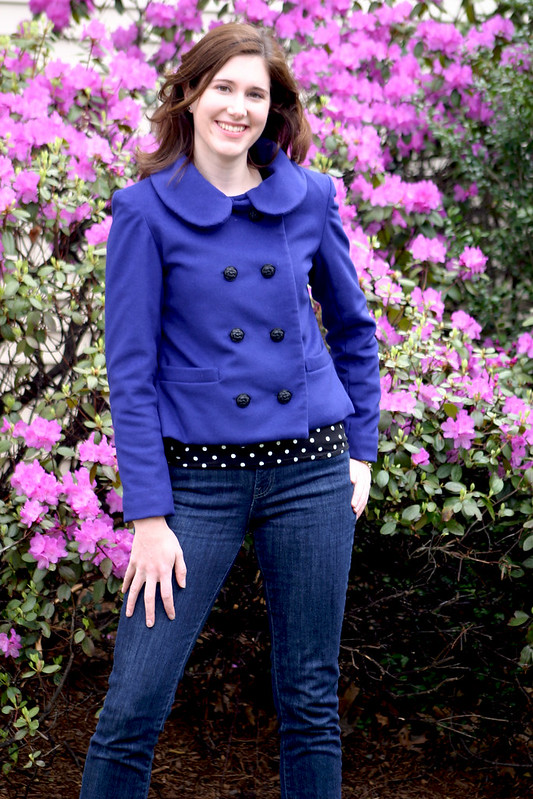
You guys – I reached the finish line! Seriously, this is the most time-consuming, difficult garment I’ve made in my sewing career. But I did it!
Pattern: Anise by Colette Patterns
Fabric: main – wool from Metro Textiles in NYC; lining – stretch poly charmeuse from Fabric Place Basement
Size: 4 graded to a 6 at the hips
Shirt: Scout tee variation, unblogged
Jeans: Levi’s
Sneakers: Reebok
I want to thank everyone for their kind words and helpful comments as I struggled over the last month to make this. Don’t get me wrong – I loved learning about the tailoring process, and I can’t wait to sew more tailored projects, but this pattern just didn’t work for me. When I posted my last update on the jacket, I was actually 95% of the way done and too far beyond going back to fix some things that you all suggested, but they’re definitely worth exploring for my next go-round with tailoring.
So yes, this jacket isn’t perfect – but at this point, it really doesn’t matter to me. I made a freaking tailored jacket, with welt pockets to boot! I know my mistakes will be evident to experienced sewists looking at these photos, but I’m going to wear this jacket with pride, knowing that I learned soooo much doing this.

1. I Have Narrow Shoulders – This is something I should have remembered from all of the blazers my Mom made for me for my first job. She had to alter each pattern because the shoulder seams came way past where the shoulder seam needed to be. This wasn’t evident when I made my muslin, but going back to try it on again, I could baaaarely see it. Which also brings me to another learning – make my muslin in the same fabric weight as the final garment. I’m sure if I had, the fit issue would have been more evident in a heavier weight fabric than light, flimsy cotton.
Having said all of that, I explored how to make my own shoulder pads, drafted sleeve heads for my jacket, and studied different kinds of shoulder pads for different types of garments (definitely need to give raglan shaped pads a try). Maybe if I didn’t have this fit problem, I wouldn’t have learned all of these tidbits of knowledge.
Also, I could not for the life of me figure out why there was so much ease in the front of my sleeve cap. No, it wasn’t inserted backwards. I’m just…perplexed, and it’s not as smooth as I’d like.
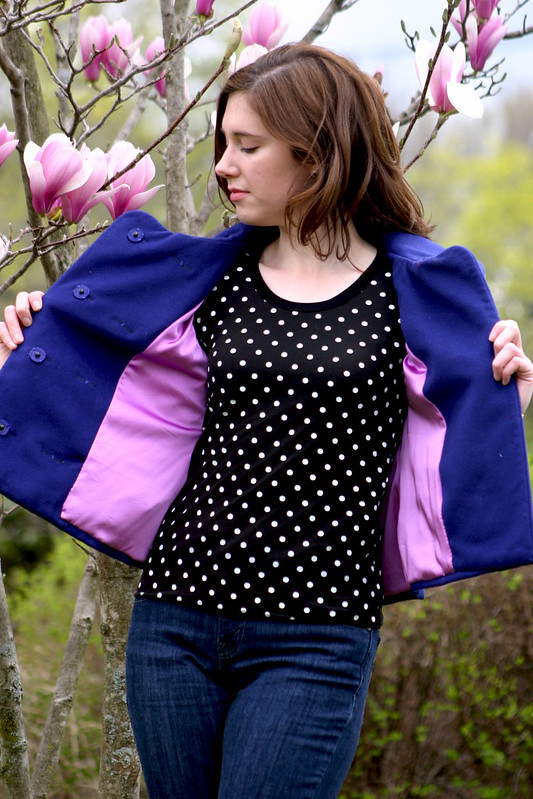
2. Stretch Fabric Isn’t a Great Idea For a Lining – but this one sure looks pretty! The color is why I picked it, which is kind of silly, I know. I thought the stretch would be an added bonus to give my jacket more movement and ease in the inside, but it ended up being more of a pain to cut out and stitch properly without getting runs in the weave. It was anything but fun when it came to setting the sleeves in by hand, yuck!
However, this lining is an improvement over my original intended lining – a light gold acetate. Acetate is a terrible idea for a jacket lining: it shows water marks and sweat stains (not good for my armpits, no way), doesn’t breathe well at all, and shouldn’t be used for garments with lots of wear. I plan on wearing this jacket a lot, so no dice with the acetate. I know poly isn’t a whole lot better in terms of breathability, but it was in my budget for this project.

3. Press, Press, Press – I originally thought I did a great job taking my time when it came to pressing, really taking my time and pressing every seam like The Pressinatrix recommends, but I guess this jacket could have used a little more based on the above photo. Having the right tools is imperative as well, I’m so glad I asked for pressing tools like a seam roll, clapper, and a tailor board last year for my birthday – they made getting to every area I needed to steam a lot easier.

4. Creativity Is My Friend – you may have noticed in an earlier photo that I have snaps on the inside of my jacket. This wasn’t the original plan, I had every intention of making buttonholes on my Mom’s wonderful Bernina (the automatic buttonhole feature is killer) when I was visiting a few weeks ago. However, the bulk at the edge of my jacket front threw off the calculations of the machine and I ended up with some wonky looking, uneven buttonholes that wouldn’t pass muster. That’s when the light bulb went off in my head that I could use snaps instead to close the jacket, and my Mom suggested covering the snaps in a coordinating lining fabric. Problem solved, and a new technique under my belt.
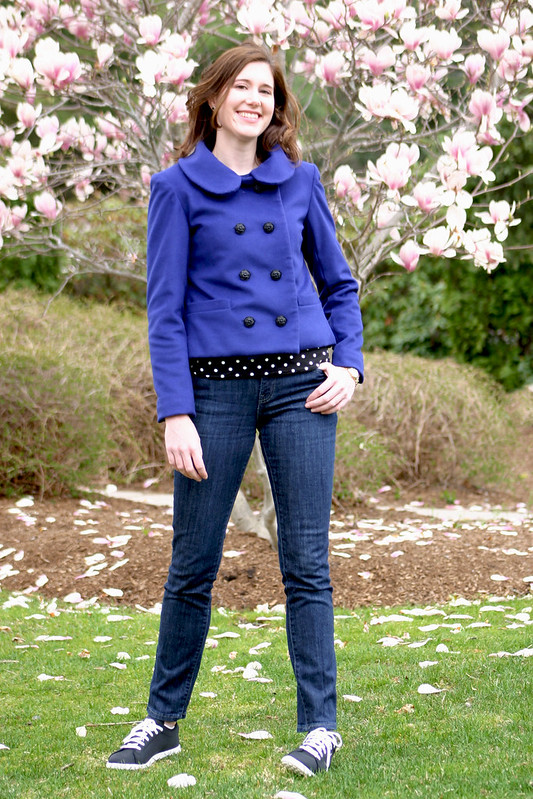
5. Perfectionism Is My Enemy – I was really close to not even finishing this jacket when I realized the problem with the shoulders, and the fact that how I made my welt pockets caused the front to pull. There were tears, I threw the jacket in the corner, and I didn’t touch the project for over a week. I wanted everything about this jacket to be crisp and perfect, I wanted people to ask me where I bought my jacket – I didn’t want it to look “home-made.” But in the course of trying to achieve something “perfect” looking, I realized I needed to cut myself some slack – this was my first ever tailoring project. How could my expectations be set so high for something I’ve never done? I trudged on with the shoulder pads, the lining, the hand hemming. There was way too much time invested in this project to give up – I steadily worked on this for a month, and to not have anything to show for all of that time would be sad. From here on out, I need to chill and just enjoy the process of making clothes, and not get all hung up on details that will probably be evident to only me.
I’m so glad I didn’t let my perfectionist tendencies when it comes to sewing prevent me from finishing this jacket! I wore it for the first time this past weekend, and it may be my last until fall since the weather is finally getting warm in Boston. I never thought I would sew a project like this, let alone enjoy something that seemed so tedious to me like tailoring. But now that I’ve taken my first step with this project, I’m determined to master the skills it takes to tailor well.
